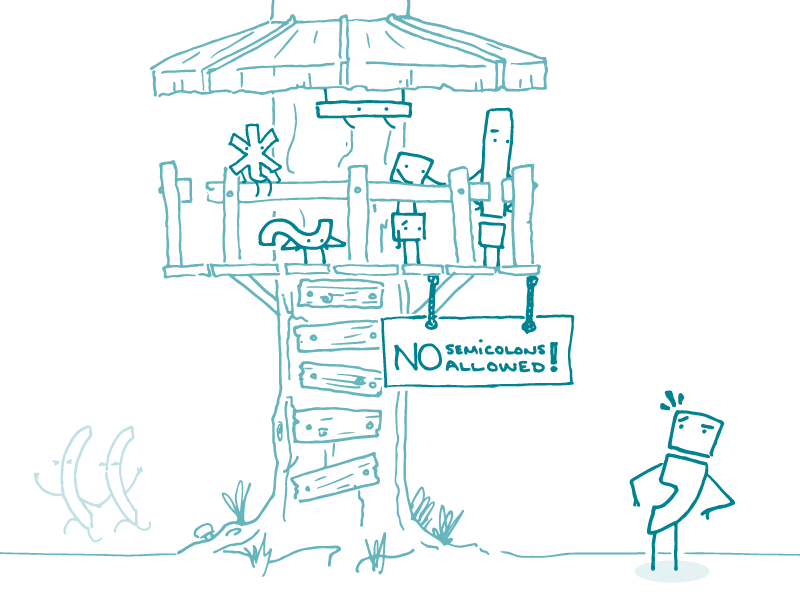
Many of us here at We ❤ Health Literacy Headquarters also ❤ a certain controversial piece of punctuation: the semicolon. If prompted, we might even gush about its unique and graceful qualities. So it’s with a heavy heart that we must declare — once and for all — that the semicolon has no place in plain language communication. Here’s why.
First, many people don’t use the semicolon properly, making it a recipe for confusion. Because you share our grammar geekiness, dear readers, you know that semicolons are used to link 2 phrases that could stand on their own (i.e., independent clauses) but are related enough to warrant a stronger connection. Unfortunately, many people don’t know this; thus, they use it incorrectly.
Second, the semicolon can feel very formal and academic — stuffy, even. And while we don’t think it necessarily deserves the bad rap, we can’t deny the association (think legal documents, research papers, and never-ending lists).
So, skip the semicolons in your plain language health materials. If you find yourself staring helplessly at a sentence with a semicolon, the best solution may be to break it into 2 sentences. (After all, a semicolon connects 2 standalone phrases, right?)
You can also consider the other punctuation marks in your grammar toolbox. In case you haven’t noticed, we’re particularly partial to the em dash ( — ). And if you’re using semicolons to separate a long list of items, try good ol’ fashioned bullets instead.
But the semicolon fun isn’t totally over — in your personal correspondences and literary contributions, disregard this advice and use ’em to your ❤’s content.
The bottom line: Semicolons aren’t invited to the plain language party — but you can make it up to them later.
Browse recent posts